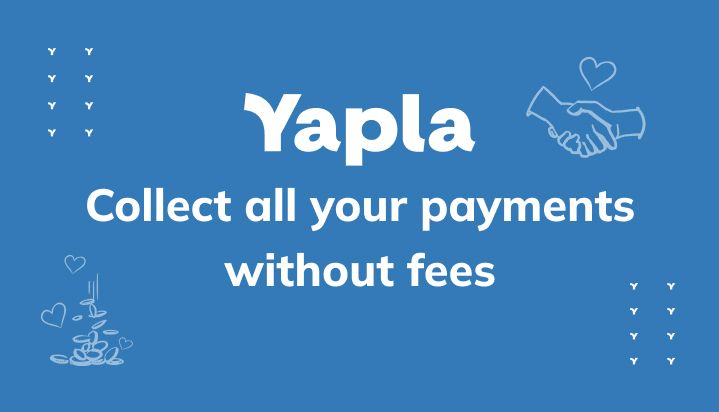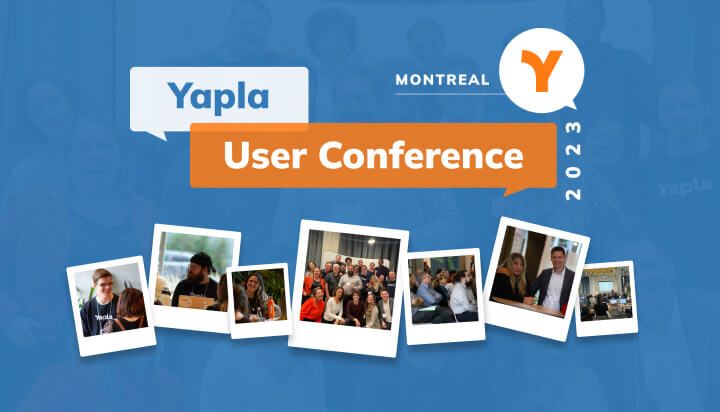
Launching or modernizing your NPO's website represents a fantastic opportunity to highlight your mission, without needing to be a technology expert or have significant financial resources.
An effective website is not just an attractive showcase for your organization; it's a dynamic tool that facilitates engagement, communication, and support for your cause.
This guide is intended for those who wish to lead this project independently, by providing clear steps to build an effective website.
1. Define the objectives and content of your website
Before diving into the creation of your site, it's crucial to think about its purpose. Every page, and every piece of information must have meaning. Define clear objectives: do you wish to inform, recruit members, and receive online donations? Keep in mind that visitors scan content rather than read it in detail. Avoid common mistakes such as a disorganized structure or a lack of hierarchy in the information.
A website is always the result of careful thought: a "catch-all" website, whose objective and structure have not been thought through, will not engage your audience as you hope. Moreover, not having a defined objective will waste your time later, as it will be harder to structure the site.
2. Mastering the cost of creating (or redesigning) your website
Redesigning or initially launching a website can be expensive. Here are some technical tips to consider to limit costs:
- Consider using a CMS (Content Management System) instead of having a custom site built. There are various types, both free and paid, with or without features. Yapla has the advanced features necessary to create a transactional website for your NPO.
- Use a predefined template rather than a custom design.
- Take your images and photos from free sites. A list of tools can be found below.
- Connect your management software to your website to automate tasks and lower the cost of your daily management. You can do this with Yapla: for example, when a donor makes an online donation, Yapla automatically enters their information into your database and sends a personalized tax receipt.
3. Choosing software to create your association's website
Choosing the right website creation software is crucial. We have listed the main criteria that should guide your choice:
- The price: look for a solution that offers good value for money, suitable for your NPO's budget.
- Accessibility: choose a platform that is easy to use, even without advanced technical skills.
- Features: make sure the software offers the necessary modules for your goals (registration pages with online payment, blog, connected space for members, etc.). Prefer software that provides integrated tools for managing memberships, donations, and events to facilitate the daily management of your NPO.
- Customization: the ability to customize your site is essential for it to reflect the identity of your organization.
- Maintenance: Choose a platform that facilitates regular content updates and technical maintenance.
- Support and community: good customer support and an active community can be of great help.
Yapla proves to be the perfect solution for developing an NPO website independently, precisely meeting each of the mentioned criteria and being specifically designed to meet the needs of non-profit organizations. If you're looking for support in creating or updating your site, our Professional Services are here for you. You'll benefit from the expertise of various professionals, and one of the great advantages is that our team is committed to training yours, thus ensuring your long-term independence!
4. Plan the site structure and navigation
An effective website is one where the visitor can easily find what they are looking for. Therefore, plan a simple and intuitive structure.
To get an overview before building your site, create a site map (sitemap) on paper or with an online planning tool like MindMeister, Trello, Notion, Xmind, GitMind, or Lucidchart.
- Think about your menu, the organization of pages, and how users will interact with your content.
- Prioritize content in the navigation menu: place the most important items first and limit the number of items in the main menu to avoid overwhelming visitors.
- Conduct tests of your structure on your software.
5. Write and optimize your content for search engines
Before diving into writing the content for your website, remember that the goal of each page has been previously defined, clarifying its role and the message to convey.
With these objectives in mind, the next step is to develop a page plan that will guide the structure of your content. Using ChatGPT can be useful for refining this plan, helping you to organize your ideas coherently.
Since visitors tend to scan rather than read websites in detail, it's crucial to structure your content in a visually intuitive way. Favor the use of bullet points, lists, and other graphical elements that facilitate the quick and effective understanding of information.
Furthermore, structure the content of your pages by wisely using HN tags (H1, H2, H3, etc.) to organize your ideas hierarchically and incorporate strategic keywords to optimize your SEO.
This approach will not only make your content more engaging for readers but will also help improve your website's visibility on search engines, ensuring that your message reaches a broader audience.
6. Improve the user experience
User experience (UX) should be at the heart of your design. Ensure that your site is pleasant to navigate, that texts are readable, and that desired actions (such as making a donation or signing up) are clear and inviting.
7. Select Quality Designs and Images
The appearance of your site has a significant impact on the impression it leaves on visitors. Choose a design that matches the image of your NPO and use high-quality images to capture attention. Here is a list of tools and platforms where you can find royalty-free images, both free and paid, to enrich the content of your website:
- Unsplash: Offers a vast collection of free high-resolution photos submitted by photographers from around the world.
- Pixabay: Provides a wide variety of images, videos, music, and sound effects that are free and royalty-free.
- Pexels: Supplies free, high-quality photos and videos shared by various creators.
- Burst (by Shopify): Offers free stock photos for entrepreneurs, with many images oriented towards e-commerce and online sales.
- Gratisography: Offers unique and high-quality images free for use.
- StockSnap.io: Provides a wide selection of royalty-free photos for all uses, with new images added weekly.
- iStock (by Getty Images): Offers a vast library of high-quality images, videos, and music. Prices vary depending on the plan and purchase volume.
- Getty Images: Offers high-quality images, including news photos, historical images, and content specific to niches.
- Shutterstock: Features millions of photos, videos, music, and illustrations. Users can buy images individually or subscribe to monthly offers.
- Depositphotos: Offers a wide selection of photos, vectors, and videos available through subscription offers or individual packs.
8. Integrate your site and ensure mobile compatibility
With the increasing use of smartphones, your site needs to be responsive, meaning it should perfectly adapt to screens of all sizes. Test your site on various devices to ensure an optimal user experience. Ensure that your site's structure is as intuitive on mobile as it is on a computer, with adaptive menus and easily clickable buttons.
Getting feedback from real users is crucial. Conduct tests with third parties to see how visitors navigate your site and adjust the structure accordingly.
9. Prioritize website security
Security is paramount to protect the data of your association and its members. Ensure that your website creation platform offers robust security options.
- Use an SSL certificate: An SSL (Secure Socket Layer) certificate encrypts data sent between your website's server and the user's browser. This is essential for protecting sensitive information such as credit card details and passwords. A visual indicator, like a padlock next to your site's URL, informs visitors that their connection is secure.
- Regular updates: Ensure that your CMS (content management system), as well as any plugins or themes used, are constantly updated. Updates often contain fixes for recently discovered security vulnerabilities.
- Use strong passwords: Encourage the use of complex and unique passwords for all accounts related to your website and consider using a password manager to securely store them.
- Regular backups: Perform complete backups of your website regularly. In case of an attack or technical problem, you can quickly restore your site to its previous state.
- Secure admin access: Limit access to your website's admin interface and use techniques such as two-factor authentication (2FA) to strengthen the security of logins.
- Monitoring and threat detection: Use security tools to monitor your site in real time and detect intrusion attempts, malware, and other potential threats.
- Secure server configuration: Ensure that your web server is configured to maximize security. This includes disabling unnecessary services, correctly configuring file permissions, and installing server security modules.
10. Analyze traffic and adjust your site's content
Regularly update your site with the latest news or events, for example. It's very important to allocate time after setting up the website for its maintenance; otherwise, it may lose its effectiveness. Implementing analytics tools will help you understand how visitors interact with your site and adjust your content accordingly. Google Analytics is a good starting point. The data your website collects can provide valuable insights that will help you strategically develop your NPO and website
Conclusion
In this article, we've covered the basics for starting or updating your association's website.
Yapla allows you to easily launch independently with a tool suitable for all types of NPOs.
Please note that Yapla also offers Professional Services for those who wish to be supported in the creation process:
- Analysis of your needs
- Advice
- Design, integration, and deployment
- Training for your teams
Several areas of expertise can be brought to bear, and one of the major benefits is that our team commits to training yours, thus ensuring your long-term independence! Discover our service here: Yapla Professional Services
Discover how Yapla
can help your NPO
Register for the discovery webinar
Solène, Marketing Manager







